Muncie 4-speed Transmission (Group 4.000) - Casting Numbers
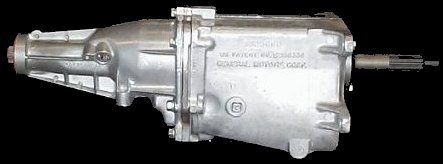
| Casting | Year(s) | Ratio/M20 | Ratio/M21 | Ratio/M22 |
| 3831704 | 1963 Only | M20 2.56 1st | M21 2.20 1st | n/a |
| 3851325 (1) | 1964 - 1965 | M20 2.56 1st | M21 2.20 1st | n/a |
| 3885010 | 1966 - 1967 | M20 2.52 1st | M21 2.20 1st | M22 2.20 1st |
| 3925660 | 1968 - 1969 | M20 2.52 1st | M21 2.20 1st | M22 2.20 1st |
| 3925661 | 1970 - 1974 | M20 2.52 1st | M21 2.20 1st | M22 2.20 1st |
| (1) The M22 case casting is unknown at this time | ||||
| Years | Type | Ring(s) | Ratio | Reverse |
| 1963 - 1965 | M20 | None | 2.56 / 1.91 / 1.48 / 1.00 | 2.64 |
| 1966 - 1975 | M20 | Two | 2.52 / 1.88 / 1.46 / 1.00 | 2.59 |
| 1964 - 1975 | M21 | One | 2.20 / 1.64 / 1.28 / 1.00 | 2.26 |
| 1967 - 1972(2) | M22 | None | 2.20 / 1.64 / 1.28 / 1.00 | 2.26 |
| Saginaw M20 | ||||
| M20 | One | 2.54 / 1.80 / 1.44 / 1.00 | ||
|
Ratio of drop between gears |
||||||||
| Transmission | 1st | 2nd | % Reduction | 3rd | % Reduction | 4th | % Reduction | Reverse |
| M20 (63-65) | 2.56 | 1.91 | 25.39% | 1.48 | 22.51% | 1.00 | 32.43% | 2.64 |
| M20 (66>) | 2.52 | 1.88 | 25.40% | 1.46 | 22.34% | 1.00 | 31.51% | 2.59 |
| M21/M22 | 2.20 | 1.64 | 25.45% | 1.28 | 21.95% | 1.00 | 21.88% | 2.26 |
| Years | Type | Ring(s)/Groove(s) | Input Splines | Output Splines |
| 1963 - 1965 | M20 | None | 10 | 27 |
| 1966 - 1970 | M20 | Two | 10 | 27 |
| 1971 - 1974 | M20 | Two | 26 | 32 |
| 1963 - 1965 | M21 | One | 10 | 27 |
| 1966 - 1970 | M21 | One | 10 | 27 |
| 1971 - 1974 | M21 | One | 26 | 32 |
| 1965 - 1970(1) | M22 | None | 10 | 27 |
| 1970 - 1972(2) | M22 | None | 26 | 32 |
(1) All M22 applications except 454 engine.
(2) All 454 Chevelle applications. The M22 was produced in 1973
and 1974 for other GM divisions.
All wide ratio transmissions are designated M20 and close ratio transmissions are designated M21 or M22 depending on the gear set. From 1963 to 1965 the close ratio M21 was ordered under the M20 RPO code and the factory decided whether to install a wide ratio M20 or close ratio M21 depending on the rear axle ratio specified. From 1966 on, the customer could decide the transmission selection.
There is strong evidence the Saginaw M20 wide ratio transmission did not appear before February/March of 1966, so all M20 4-speeds are assumed to be Muncie before this date. If anyone as documented proof, such as a warranty card (Protect-O-Plate) showing a Saginaw coded M20 (R) prior to February/March of 1966 is encouraged to send a readable image of the warranty card for verification.
The M20 and M21 have the same cut to the gears, the M22 is a straighter cut resulting in a greater strength. Since the M20 and M21 look the same one way to tell them apart (aside from the grooves on the input shaft) is the tooth count on the cluster gear.
1963-1965:
M21/M22 tooth count - 27, 22, 19, 17
M20 tooth count - 29, 22, 19, 17
1966-1974:
M21/M22 tooth count - 27, 22, 19, 17
M20 tooth count - 25, 22, 19, 17
There are 7 different input shaft possibilities on a Muncie. All 26 spline inputs came with 32 spline output shafts and all 10 spline inputs came with 27 spline output shafts. It is commonly mistaken that all "fine spline" 26 spline input shafts are M22 transmissions. The M22 transmission has a 20 degree helix angle on the gear set as opposed to a 45 degree angle found on the M20 and M21 and were made with a higher nickel alloy. The straighter angle was designed to produce less end loading of the gear train and less heat but created more noise, thus the nickname "Rock Crusher" was born. Another misconception is if you have a drain plug you have a M22. This was only true when the first M22 boxes were created; all 3925661 castings (1970-1974) had drain plugs.
Partial or "concealed/confidential" VIN Stamping
Most transmissions since 1962 will also have a CON VIN (concealed or confidential VIN, partial VIN, or VIN derivative - whichever term one likes) stamped in the case generally along the top ridge or even on a mounting surface such as the flange mounting the tail shaft to the main case noting the original car it was installed in. The stamped CON VIN is the same that is stamped on the engine pad in all 1968 and later Chevelles, and generally 1966 & 1967 SS396 Chevelles with an alphanumeric set of characters like 7K123456; model year, assembly plant, and vehicle sequence number. The engine and transmission were stamped at the same time by the final assembly plant
Most plants stamped the CON VIN on the top while some stamped it on the side near the date code. Characteristics of the VIN stamp, including the location, type size of the stamp, and the method (individual or 'gang' stamped) was chosen by the individual assembly plant.
1963 through 1966
Date codes from 1963 to 1966 included only the month & day; such as P0110 indicates January (01) 10th day (10).
1967 and 1968
In 1967 and 1968, the date code got a year designator and a letter designator for the month such as P8A01, meaning 1968 (8), January (A) 1st (01). Note that a Muncie dated with a September to December build date was actually built the prior calendar year. An example would be the date code P8T13, meaning 1968 (8), December (T), 13th. The transmission was assembled December 13, 1967 for the 1968 model year. Likewise a P8S28 stamp means 1968 (8), September (S), 28th of the calendar year 1967 for a 1968 Chevelle. See second example below.
1969 through 1974
The 1969 to 1974 Muncie got a ratio designating letter at the end of the date code. An example would be P0C25B. This decodes to 1970 (0), March (C), 25th, M21 (B).
Note: The ratio designation letter didn't appear until around October 1, 1968 for the 1969 model year so any Muncie in a 1969 Chevelle dated August (M) or September (P) would probably not have the A, B, or C designation.
| Date codes: | |||
| A ~ January | B ~ February | C ~ March | D ~ April |
| E ~ May | H ~ June | K ~ July | M ~ August |
| P ~ September | R ~ October | S ~ November | T ~ December |
Type Codes: A ~ M20, B ~ M21, C ~ M22
1964

Here is an example from a 1964 Chevelle from Fremont, CA. Note the
H103065 stamped on the flange and the date is shown
by the P1030 stamping in the upper right of this photo.
The VIN derivative stamping positively identifies this as a 1964 Fremont
Chevelle because the letter "H" was only used in 1964 for
Fremont.
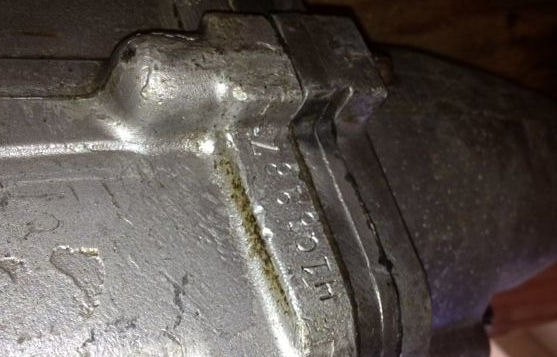
Another Fremont example as noted by the leading "H" in the
VIN derivative.
1966

Note 1966 date format, February 24
1967
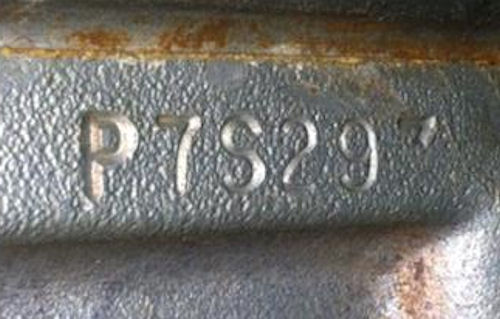
1967 Muncie coded P7S29 for November 29, 1966.*

1967 Muncie coded P7T21 for December 21, 1966.*
* Note the extra smaller "7" or possibly "v" after the dates. The exact meaning of this character is not known; there are suspicions, but no facts. If you have a Muncie with a similar character after the date, can get a photograph of it and KNOW whether it's an M20, M21, or M22, please pass it along.
1968
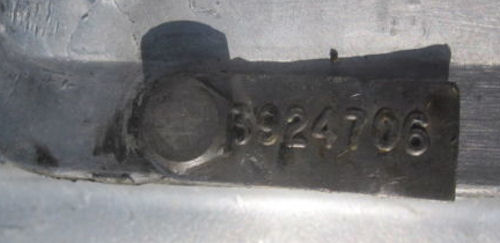
1968 Muncie transmission tag #3924706. Date stamped P8P27 for Muncie,
September 27, 1967 and partial VIN of 18K116891. Reported to be M21
but cannot find tag number to verify.
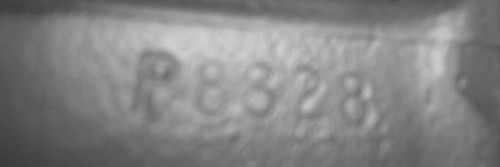
1968 Muncie coded P8S28 for November 28, 1967.
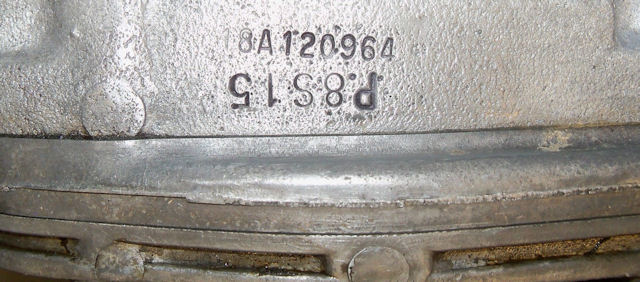
1968 Muncie coded P8S15 for November 15, 1967

Same transmission above with partial VIN stamping.
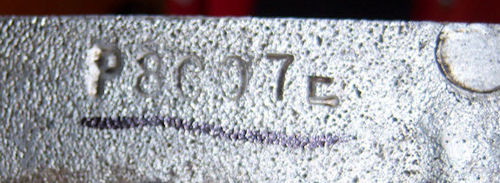
1968 Muncie coded P8C07 for March 27, 1968.
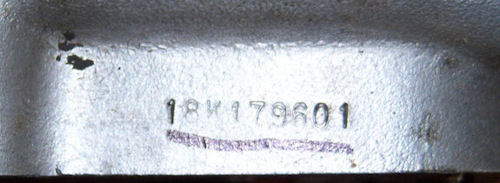
Same transmission above with partial VIN stamping.
1969
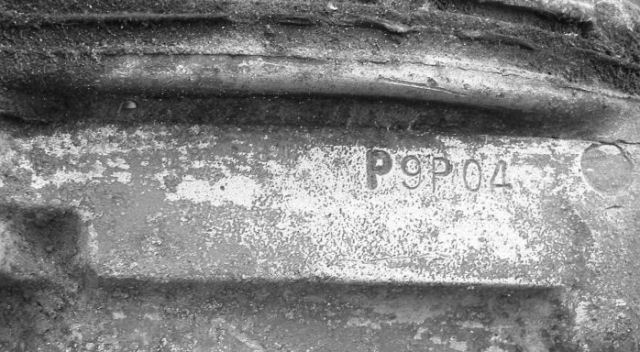
Note early 1969 Muncie (September 4, 1968) stamping without the type
(A, B, or C) designation. The ratio designation letter didn't appear
until around October 1, 1968 for the 1969 model year.
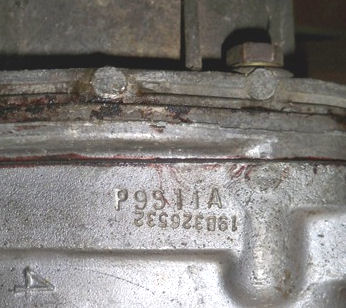
1969 Muncie P9S11 ~ November 11, 1968 - M20
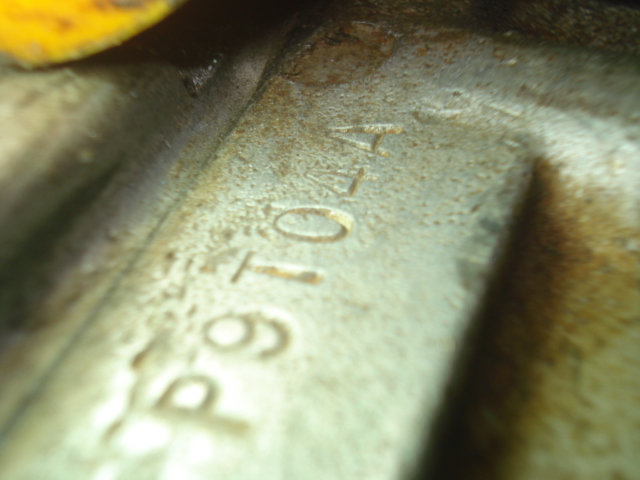
1969 Muncie P9T04A ~ December 4, 1968 - M20

1969 Muncie P9A31C ~January 31, 1969 - M22 with partial VIN of 19K405888.
 |
|
1969 Muncie P9C15A ~ March 15, 1969 - M20
1970
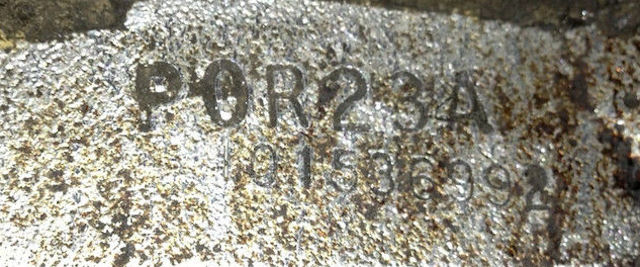
P0R23A ~ M20 dated October 23, 1969
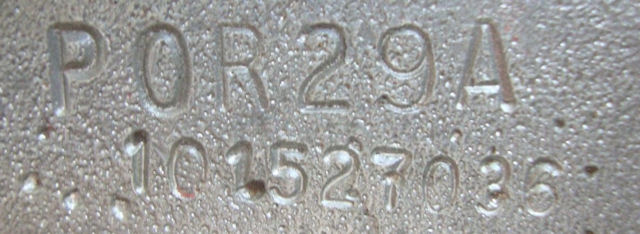
P0R29A ~ M20 dated October 29, 1969. Partial VIN for Oshawa, ON Chevelle.
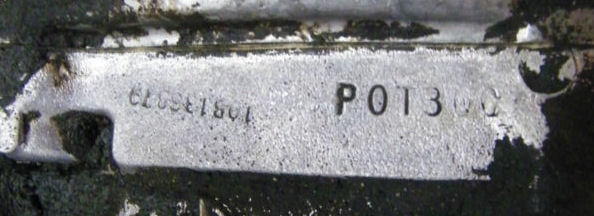
P0T30C ~ M22 dated December 30, 1969.
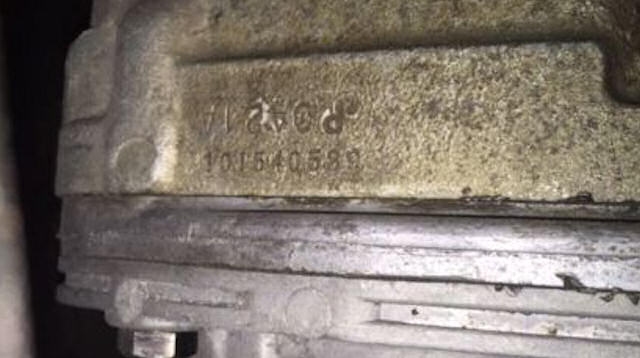
P0A21A ~ M20 dated January 21, 1970.
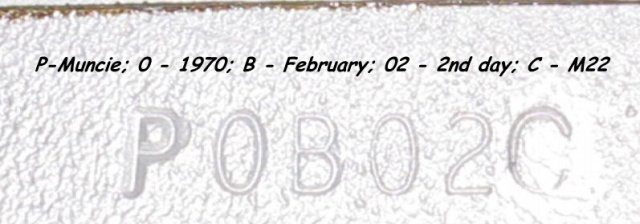
P0B02C ~ M22 dated February 2, 1970.

P0B24B ~ M21 dated February 24, 1970.

P0C17A ~ M20 dated March 17, 1970

P0H18B ~ M21 dated June 18, 1970

WO stamp found on a 1970 Flint LS6 M22.

Warranty transmission. Note CT0 (Chevrolet, Transmission, 1970) and
42862 serial number.
1972
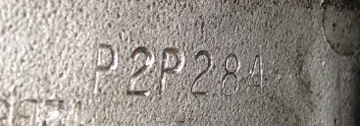
P2P28A ~ M20 dated September 28, 1971.
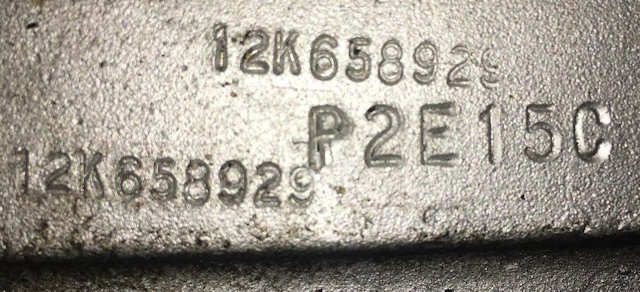
P2E15C ~ M22 dated May 15, 1972
Transmission Identification
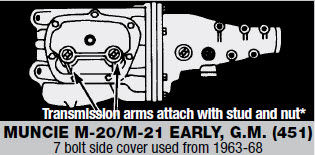

1964 to 1968 Muncie 4-speed transmissions can be identified from later
models by the way the transmission arms attach. Early Muncie side covers
had a stud and the shift arm attached with a nut on the stud while the
1969 and later model side covers had a hole and the shift arms attached
with a bolt.
Those installing a 1969 or later Muncie into 1964-1968 Chevelle and using a Hurst Competition Plus shifter must get the proper shifter tower assembly for the 1964-1968 Chevelle and the installation kit for the 1969-1972 Muncie due to the shift arms bolting onto the transmission differently. The same is true if you are going to install a 1964-1967 Muncie transmission into a 1968-1972 Chevelle. The Hurst Competition Plus Shifter fits both with and without console.
| Year Chevelle | Muncie Type | Shifter Number | Installation Kit Number |
| 1964-1967 | Muncie (451) | 3917308 | 3733163 |
| 1968 | Muncie (451) | 3918014 | 3733163 |
| 1969-1972 | Muncie (452/453) | 3918014 | 3737834 |
| 1973-1974 | Muncie (453) | 3916848 | 3737897 |
If using a Hurst Super Shifter on a Muncie there is only one shifter and one installation kit. The shifter is #3917535 and the installation kit is #3738616. This shifter is NOT vehicle specific so they will not fit a console, and probably not a bench seat due to their location, and floor pan modifications are generally required.

The Saginaw 4-speed transmission was also used and shown for "M20
PROD V-8 ENG & R.P.O. L30". Easily identified by the reverse
gear being on the main case instead of the tail housing.
The proper Hurst Competition Plus system for a 1966-1967 Saginaw is shifter #3917307 and installation kit #3734297.
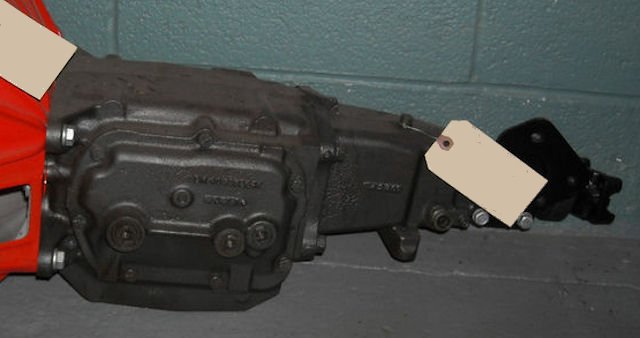
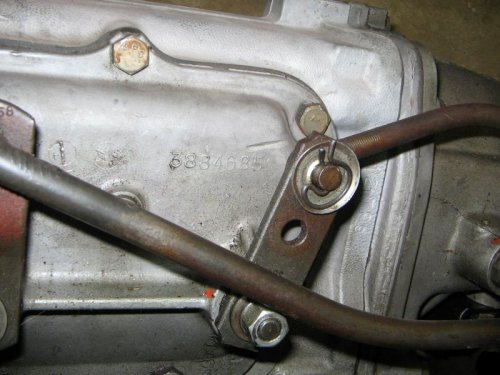
Early (64-68) side plate. Note the shift arms are held in place by a
stud/nut arrangement.

Late (69 >) side plate. Note the shift arms are held in place by
bolts.
Part Number Tags
Some of these tag numbers/codes may apply to other Chevrolet models
(not just Chevelles) in these years.
Those listed in have sample images.
Those listed in have been found
but numbers do not appear in any Chevelle Assembly Manual.
1965 M20 3857577
1965 M20 3857578 Z16
1966 M20 3890534 L78
1966 M22 3879993 L78
1967 M20 3870357 L34, L35, L79
1967 M22 3879993 L78
1968 M20 3915079 L34, L35, L78, L79
1968 M21 3915085 L34, L35, L78, L79
1968 M22 3925626 L78
1969 M20 3950301 L48, L35
1969 M22 3950318 L78, COPO L72
1970 M21 3968012 (disc.3-11-70)
1971 M20 3974484 WN
1971 M22 3978766 WO
1972 M20 3974484 WN

1964 M20
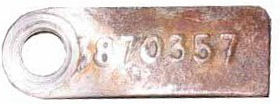
1966 L34/L35 M20

Found on 1966 L78, M21
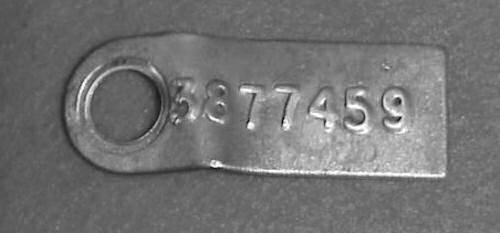
1967 M21
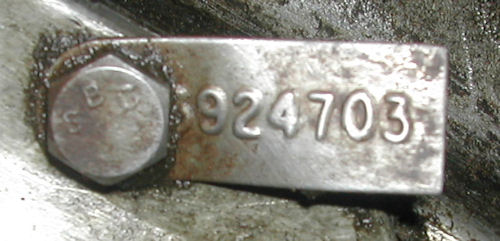
Found on 1968 L35, M20

Found on two 1968s, reported to be M21 but number (3924706) cannot be
found to verify

Found on 1969 L78, M21
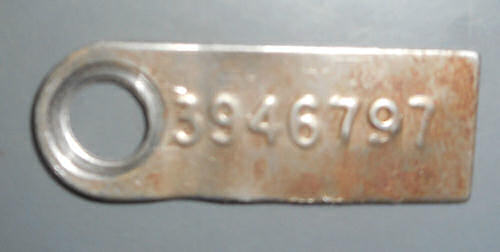
1969 L34, L78, M20

1970 L34/LS3/L48/L78, M20

1970 L34/LS3/L48/L78, M21

1970 LS6/LS6, M22
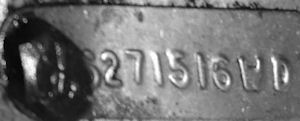
Found on 1972 LS3, M20
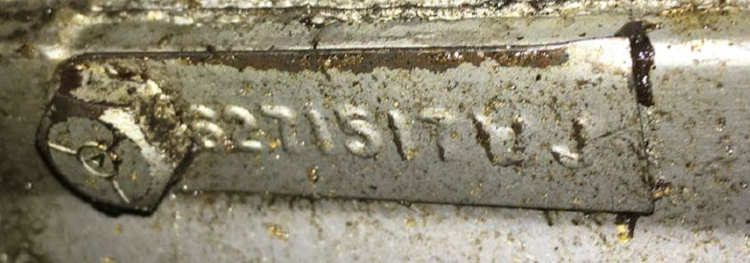
Found on 1972 LS5, M22
If you're lucky enough to find one of these attached to your Muncie 4-speed it indicates the GM part number of the transmission assembly aiding you further in identifying the transmission. Be forewarned these tags are being reproduced, see example below, so be wary of the tag's condition before accepting the fact it is the correct transmission for your application. The WB and WO suffix in the two examples above also correspond to the broadcast codes on the build sheet.

Reproduction transmission tag.
M20/M21 vs. M22 gear sets & input shaft
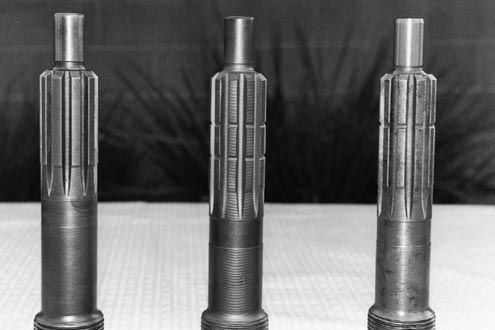
From left to right:
No grooves - 1963-1965 M20 and 1965-1972 M22
Two grooves - 1966-1970 M20 (1971-1974 M20 has 26 splines as opposed
to the 10 spline early unit shown here)
One groove - 1963-1970 M21 (1971-1974 M20 has 26 splines as opposed
to the 10 spline early unit shown here)
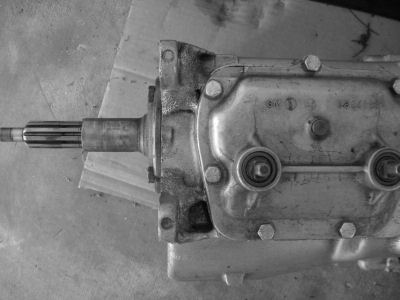
The input shaft above is a 10-spline unit while the one below is a 26-spline unit. Note the much finer splines on the one below.
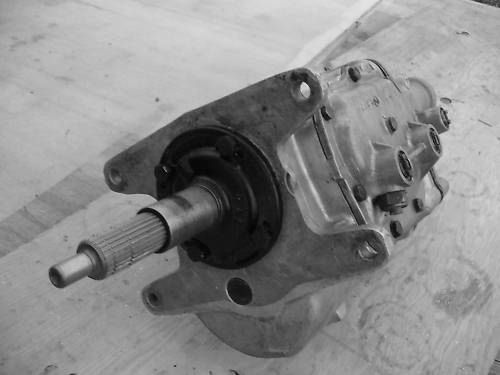
Another 10-spline versus 26 spline comparison
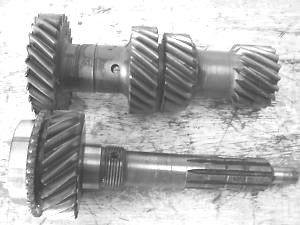
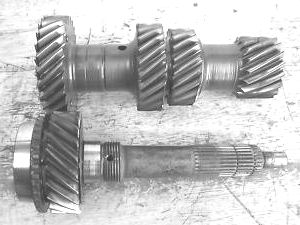

Note thicker teeth on the M22 input shaft as well as the straighter
cut gears.

RPO M20/M21 gear set - compare the angle cut of the gears to the M22
below.
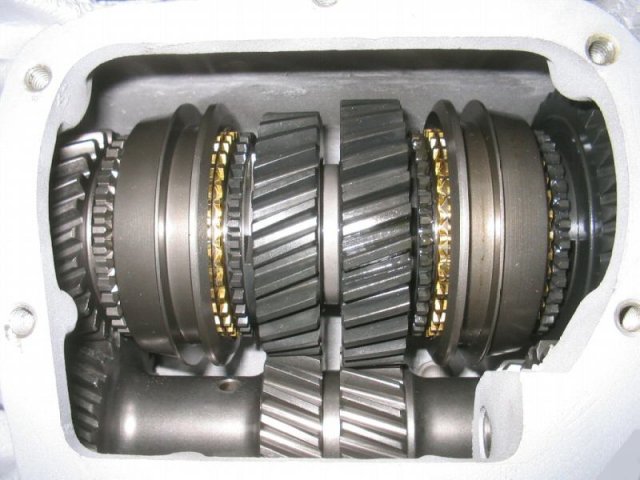
RPO M22 gear set
Warranty Replacement
Transmissions were also subject to replacement, be it just the case or the entire transmission. These will have a stamp something like "CC" for Chevrolet Case or "CT" for Chevrolet Transmission. The same information about partial VINs on engine blocks also applies to transmissions.
Muncie 4-Speed Casting Numbers
Main Case
| 3831704 | 1963 Only small 6207NR Front Bearing ,Pat. Pending, 7/8" Bore |
| 3839606 | 1964 Regular Bearing Pat. Pending, 7/8" Bore |
| 3864_____ | 1964 Milled off last 3 digits 7/8" Bore Patent Pending |
| 3851325 | 1964 - 1965 7/8" Bore Patent Pending Mostly 1964 |
| 3851325 | 1964 - 1965 7/8" Bore Patent Number |
| 3885010 | 1966 - 1967 1" Bore Patent Number |
| 3925660 (3) | 1968 - 1969 1" Bore Patent Number |
| 3925661 | 1970 - 1974 (some early 1975 cars) 1" Bore Patent Number |
| (3) Colvin's "by the numbers" book notes that Muncie data shows 1968 and 1969 M22 transmissions received main case #3925661. All documented M22 transmissions have the #3925660 main case. It is unclear why there is the discrepancy. | |
Tail Housing
| 3831731 | 1963 "Thin Fin Tail" Driver speedometer 27 spline |
| 3846429 | 1964 - 1970 "Thin Fin Tail" Driver speedometer 27 spline |
| 9779246 | 1964 - 1968 Pontiac & OLong Tail Driver Speedo 27 Spline |
| 3857584 | 1966 - 1970 Passenger side speedometer, 27 spline (1970 M20/M21 only) |
| 3978764 | 1970 - 1974 Passenger side speedometer, 32 spline output (1970 M22, all 1971 thru 1975) |
Side Cover
| 3831707 | 1963-1965 Early side cover stud type shift shafts |
| 3884685 | 1966-1968 Used with 3857584 tail stud type shift shafts |
| 3950306 | 1969 Short boss with bolt on type shift shafts - no switches |
| 3952642 | Long boss bolt on type w/ TCS switch on 3-4 (not verified) |
| 3952648 | 1970-74 Short boss bolt on type w/ TCS switch on 3-4 |
| 335308 | Long boss bolt on type with neutral safety switch. Some have a boss for the switch that is cast but not machined on 1-2. |
It should be noted that there are many different websites and publications with Muncie transmission information that seems to be in conflict as to various casting numbers, input/output shaft splines, etc. I've tried to weed through as much of this as I can and bring you the consensus of what's correct. If you have some reference or documentation that contradicts anything here I'd love to hear from you.

 Home
Home Decode
Decode Tech
Tech Tools
Tools Dale's Coins/CDs
Dale's Coins/CDs Contact
Contact Chevelle
of the Month
Chevelle
of the Month Things
For Sale
Things
For Sale Custom
Stickers
Custom
Stickers